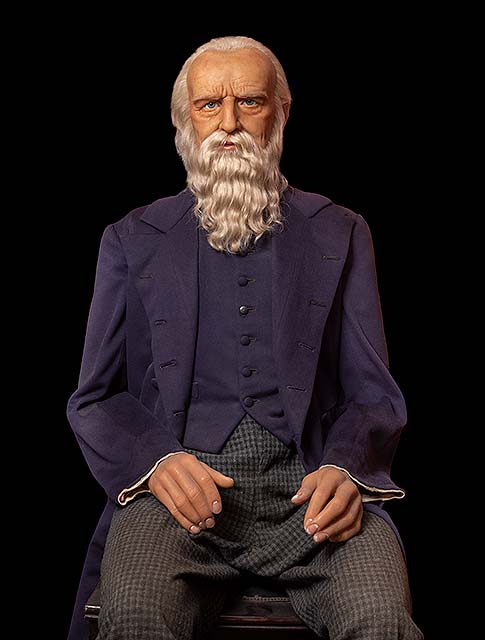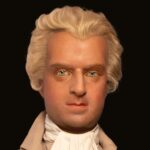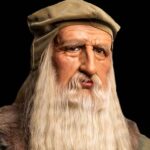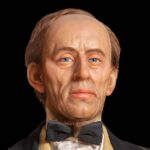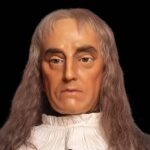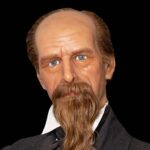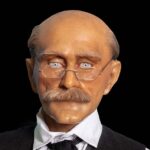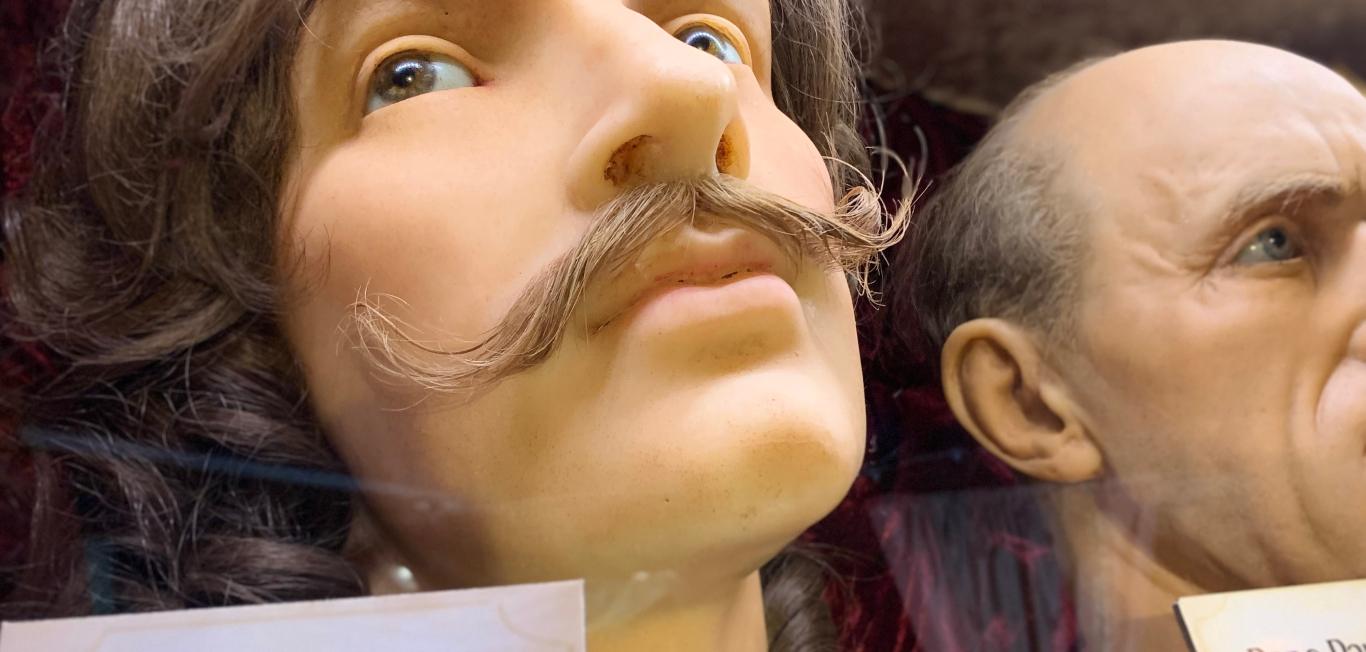Biography of Henry Wadsworth Longfellow
Henry Wadsworth Longfellow’s biography documents the accomplishments in Longfellow’s life that have made him one of the most notable literary figures in America. Longfellow was born in 1807 in Portland, ME, and died in Cambridge, MA, in 1882. He is best known as a poet and educator and one of the most influential persons of the 19th century. Over 100 years later, his literary works are often used as references and influences in American academia. In 1822, Henry Longfellow graduated from Portland Academy and enrolled in Bowdoin College, where he studied alongside Nathaniel Hawthorne. Post-graduation, Longfellow accepted a position to teach at Bowdoin College, but before he settled into his academic career, he spent some time traveling throughout Europe to round out his studies and bring new literary tools back to America.
Shortly after Henry Longfellow began teaching at Bowdoin College, his literary career began taking off and his poems were being published in the paper. In 1839, Longfellow’s “Voices in the Night” was published in the Portland Gazette. Not too long after this publication, Henry Wadsworth Longfellow’s first collection of poems was released. Some of Longfellow’s most notable works in the 1840s include “Ballads and Other Poems,” “Poems on Slavery,” and “The Belfry of Bruges and Other Poems.” Other than poetry, Longfellow’s skill in languages aided in his global recognition, as he learned to translate European literature into English. A few authors that Longfellow translated works for are Dante Alighieri, Johann Wolfgang von Goethe, and François Villon.
Henry Wadsworth Longfellow’s history proves his literary works have had great significance in the academic world. As an academic professor, Longfellow practiced what he preached. Henry Longfellow wrote several works of prose, the most popular being Hyperion and “The Courtship of Miles Standish.” Beauty and sentiment are common themes throughout Henry Longfellow’s literary works. Longfellow learned to paint a vignette of life with his words, capturing the minds of readers and transporting them into the scene. Henry Longfellow’s most popular narrative poems are “The Song of Hiawatha” and “Paul Revere’s Ride.” The American Revolution occurred before Henry Wadsworth Longfellow’s time, but his ability to recount this infamous event made “Paul Revere’s Ride” a permanent memory in American history.
DID YOU KNOW?
Beauty and sentiment are common themes throughout Henry Longfellow's literary works.
Longfellow’s influence on American literature and culture is immense, and his poetry remains popular to this day. His legacy is commemorated by numerous statues and memorials throughout the United States, and his former home in Cambridge, Massachusetts is now a National Historic Site.
9 Unbelievable Henry Wadsworth Longfellow Facts
Henry Wadsworth Longfellow was an accomplished polyglot, having the ability to speak eight different languages fluently.
Henry David Thoreau was a student of Henry Wadsworth Longfellow at Harvard University.
Henry Wadsworth Longfellow was a part of the 1825 graduating class at Bowdoin College, which also included the renowned author Nathaniel Hawthorne.
He is the only American to have received a bust in Westminster Abbey in London, England.
Well-known phrases, such as “into every life, some rain must fall” and “ships that pass in the night,” can be found in the poems of Henry Wadsworth Longfellow.
Henry Wadsworth Longfellow had a fondness for dogs.
Henry Wadsworth Longfellow was the first American to produce an English translation of Dante Alighieri’s “Divine Comedy.”
At 13 years old, Henry Wadsworth Longfellow had his first poem published in the Portland Gazette.
The United States Postal Service released a stamp featuring a portrait of Henry Wadsworth Longfellow on February 16, 1940 with a one-cent value.
Early Life of Henry Wadsworth Longfellow
On February 27, 1807, in Portland, ME, Henry Wadsworth Longfellow was born. Longfellow came from a prominent family, as his father, Stephen Longfellow, was a lawyer and politician, and his mother, Zilpah, was involved in social causes. Henry Longfellow was the second born of eight children. In his early life, Henry Wadsworth Longfellow had always shown an interest in books and was known to be an intelligent child growing up. He mastered his studies at the schools in Portland, ME, and grew a talent for languages. By the time he graduated from Portland Academy in 1822, he was fluent in several European vernaculars. After graduation, Longfellow stayed close to home and attended Bowdoin College in Brunswick, ME. His passion for literature and languages continued to grow, and he naturally excelled in his studies. Some of Longfellow’s classmates would later go on to be notable figures in American history. Nathaniel Hawthorne and Franklin Pierce were Longfellow’s classmates who also made their mark on the world; Hawthorne in literature and Pierce as the president of the United States.
While attending Bowdoin, Henry Wadsworth Longfellow became intrigued by Romantic poets and used that inspiration to begin writing his own poetry. “The Battle of Lovell’s Pond” was Longfellow’s first publication and was printed in the Portland Gazette in 1825. Within that same year, Henry Longfellow graduated from his studies at Bowdoin College and proceeded to develop a career in academia. Staying loyal to his roots, Henry Wadsworth Longfellow began his literary career teaching at Bowdoin College and later earned a position at the esteemed Harvard University. In 1836, Longfellow was appointed the Professor of Modern Languages. Throughout his time at Harvard, Henry Longfellow continued to master his skills in writing and publishing poetry.
DID YOU KNOW?
Longfellow began his literary career teaching at Bowdoin College and later at Harvard University.
Henry Wadsworth Longfellow’s first collection of poems was published in 1939 and is titled “Voices of the Night.” Romanticism played a large role when Henry Wadsworth Longfellow was writing poetry in his early life. Longfellow took influence from William Wordsworth and Samuel Taylor Coleridge. Key themes that are often found in Henry Longfellow’s work are nature, love and death. Longfellow is also known for his ability in lyricism and musicality. In Longfellow’s early poetry, there is a heavy influence from European literature and culture, which also fed his intrigue for learning languages. Longfellow’s most referenced poets are Dante Alighieri and Johann Wolfgang von Goethe.
Longfellow’s interest in literature and academia throughout his early life laid the foundation for his future success as a poet and educator. His natural curiosity of intellect and languages served him well, as his talent for writing would make him one of the most important literary figures of the 19th century.
Accomplishments of Henry Wadsworth Longfellow
In 1859, Henry Wadsworth Longfellow was recognized for his accomplishments with an honorary Doctorate of Law from Harvard.
Henry Wadsworth Longfellow was recognized for his academic potential and was accepted into the prestigious Portland Academy in 1813, marking a milestone achievement in his life.
Henry Wadsworth Longfellow translated a book by a medieval Spanish poet in 1833.
Henry Wadsworth Longfellow’s accomplishments while studying at Harvard University included the 1847 publication of his epic poem, “Evangeline: A Tale of Acadie.”
Henry Wadsworth Longfellow Later in Life
On March 24, 1882, 75-year-old Henry Wadsworth Longfellow died at his home in Cambridge, MA. By the time of his death, he had been in poor health for several years. Much of the decline in Longfellow’s health was due to several tragedies that he encountered in the last 20 years of his life. One of the tragedies that affected him most was the death of his wife in 1861. Frances, Longfellow’s wife, died from her dress catching on fire in their home. In an attempt to put the fire out, Henry Longfellow suffered from significant burns and scarring. The second tragedy that most affected Longfellow was the loss of his son Charles. Charles was a Union soldier in the Civil War. In 1863, he was so severely injured on duty that he was relieved from military service and died three years later. The emotional and physical wounds from the loss of his wife and son left Longfellow devastated and contributed to his declining health. The ultimate cause of his death was a bout of peritonitis.
Throughout his five-decade career, Henry Wadsworth Longfellow became so well-known that, when he died, there was an international mourning. His funeral was well-attended, as he made an impact on millions of people around the world, and his life was celebrated through a sequence of events and commemorations. In appreciation of Longfellow and what he gave to the literary world, a statue was erected at his birthplace in Portland, ME, in his honor. After his death, the literary works of Henry Wadsworth Longfellow continued to expand in popularity and keep his legacy alive. Longfellow’s poetry is used by schools to develop literature curricula, as his contributions have helped shape the cultural environment of the literary world. Longfellow was best known for his use of poetic devices and his ability to translate foreign works into English. Henry Wadsworth Longfellow continues to be a resource and inspiration for writers and readers, and his phrases are often quoted in everyday life. Henry Wadsworth Longfellow’s final resting place is next to his wife at Mount Auburn Cemetery in Cambridge, MA.
DID YOU KNOW?
Longfellow was best known for his use of poetic devices and his ability to translate foreign works into English.
Today, literature and history fans can visit Henry Longfellow’s home in Cambridge, MA. Longfellow’s home is a living museum that is recognized as a National Historic Site. Open to the public for tours and events, guests have the opportunity to see Henry Longfellow’s original belongings and furnishings, including displays of his life and accomplishments.
FAQs
How does the poem “Aftermath” by Henry Wadsworth Longfellow connect to Romanticism?
“Aftermath” connects to Romanticism due to two key components in literary works: individual emotion and imagination.
What is the summary of “The Singers” by Henry Wadsworth Longfellow?
Longfellow’s poem “The Singers” is about the narrator’s experience watching a group of singers perform and create a transformative atmosphere through song that brings them to a place of serenity.
Can you summarize Henry Wadsworth Longfellow’s poem “The Singers?”
“The Singers” is about the power that music and poetry have to uplift the human spirit.
What are the different types of poetic devices in the poem “How Beautiful is the Rain!” by Henry Wadsworth Longfellow?
There are six poetic devices used in “How Beautiful is the Rain!” The six poetic devices are simile, personification, alliteration, assonance, imagery and repetition.
